Designing Your Dream Home Office: A Comprehensive Guide
A well-designed home office increases productivity while also improving comfort and overall well-being. Especially in this post 2020 world that we live in where remote work and telecommuting are becoming more common, having an efficient and visually attractive home office is important. Whether you’re starting a new workspace or redesigning an old one, there are tips and guides needed to make your office space is as comfortable and functional as possible. You want to feel more comfortable and productive especially when your home doubles as your office.
I this article, I’ll walk you through with the essential tips and recommendations you need to set up the perfect home office .
1. Choosing the Right Location
The first step in building a home office is determining the best location. Consider the factors listed below:
- Privacy: Select a private location where you may work without interruptions. A private room with a door is preferable, but if that’s not an option, find a quiet spot in a less-trafficked portion of your home.
- Natural Light: Natural light improves mood and productivity. Position your desk near a window to maximize daylight.
- Space: Make sure there is adequate area for your workstation, chair, and any other furniture or equipment you may require.
2. Selecting Functional Furniture
Investing in ergonomic and practical furniture is essential for a comfortable and productive work environment. Consider the functional furniture listed below:
- Desk: Select a desk that matches your area and meets your requirements. Consider the size, storage choices, and styling. Standing desks are popular among those who want to decrease the health concerns connected with extended sitting.
- Chair: An ergonomic chair is required. Look for a chair with adjustable height, lumbar support, and comfy padding.
- Storage: Use shelves, cabinets, or drawers to keep your workspace orderly. A clutter-free atmosphere improves focus and productivity.
3. Optimizing Lighting
Proper lighting is essential for decreasing eye strain and establishing a comfortable work environment. Consider the proper optimized light below:
- Natural Lighting: Make the best use of natural light. To avoid screen glare, position your desk perpendicular to the windows.
- Task Lighting: To illuminate your workspace, use task lighting, such as a desk lamp with an adjustable brightness.
- Ambient Lighting: Use ambient lighting to create a harmonious and welcoming environment. Overhead lighting, floor lamps, and wall sconces can all help with this.
4. Personalizing Your Space
A personalized office can help you feel more creative and comfortable.
- Decor: This Include personal touches such as artwork, pictures, and plants. These objects can enhance the ambiance of your office and express your personality.
- Color Scheme: Select colors that enhance concentration and relaxation. Blues and greens are believed to have a relaxing impact, whereas bright hues can enliven the environment.
- Inspiration Board: Make a vision board featuring objectives, phrases, and images that inspire you. This can be a consistent source of incentive.
5. Incorporating Technology
Ensure that your home office is equipped with the appropriate technologies to help with your work. The needed technologies in your home office are:
- High-Speed Internet: A stable internet connection is essential for distant work. If you are experiencing regular connectivity troubles, consider upgrading your plan.
- High-Quality Equipments: Invest in high-quality equipment such as a computer, printer, and scanner. Ensure that you have all of the tools required for your specific job.
- Cable Management: Keep cords and cables orderly to avoid a cluttered appearance. Cable organizers and clips can aid in maintaining a neat appearance.
6. Ergonomics and Health
Maintaining excellent posture and taking care of your health while working from home are critical. Concerning this, there are health conditions you should consider while working. They are:
- Monitor Positioning: Position your monitor at eye level to reduce neck strain. To obtain the desired height, stack books or use a monitor stand.
- Keyboard Postitioning: Position your keyboard and mouse with your wrists straight and your arms at a 90-degree angle.
- Breaks: Schedule regular breaks to stand, stretch, and rest your eyes. Consider using a timer to remind yourself to take pauses.
7. Creating a Productive Environment
Your work environment should encourage productivity while minimizing distractions. Here is how to manage distractions while creating a productive environment:
- Soundproofing: If noise is a concern, consider using thick drapes, rugs, and door seals.
- Plants: Adding vegetation can enhance air quality and lower stress. Choose low-maintenance plants such as succulents and peace lilies.
- Organization: Organize your desk using trays, baskets, and organizers. A clean desk can help you stay focused and productive.
Some Perfectly Done Home Office Decor Ideas


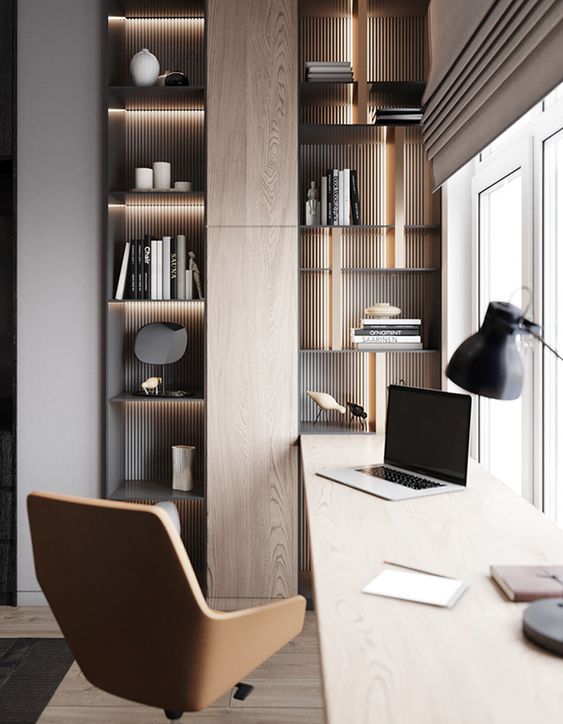
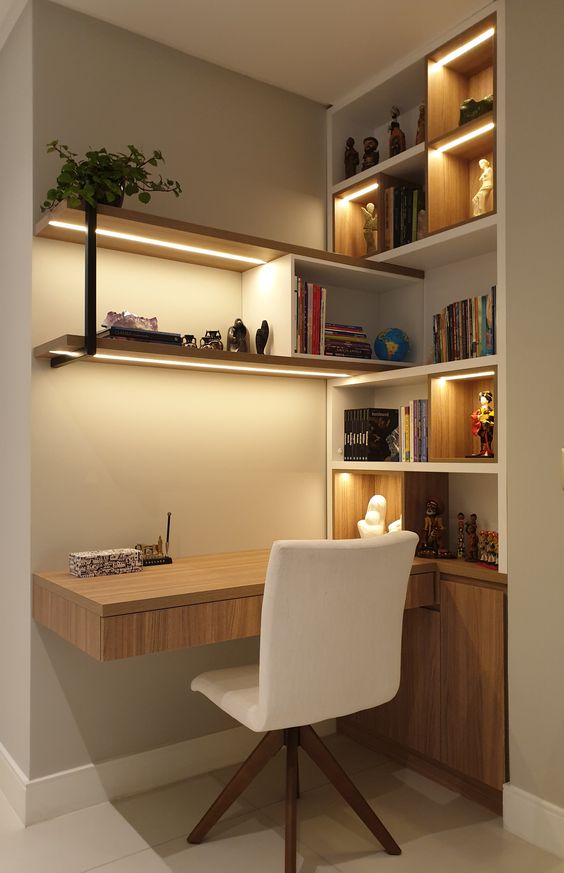
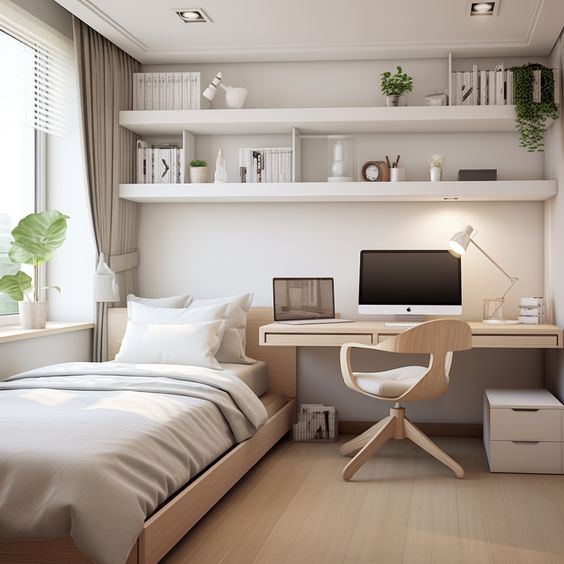
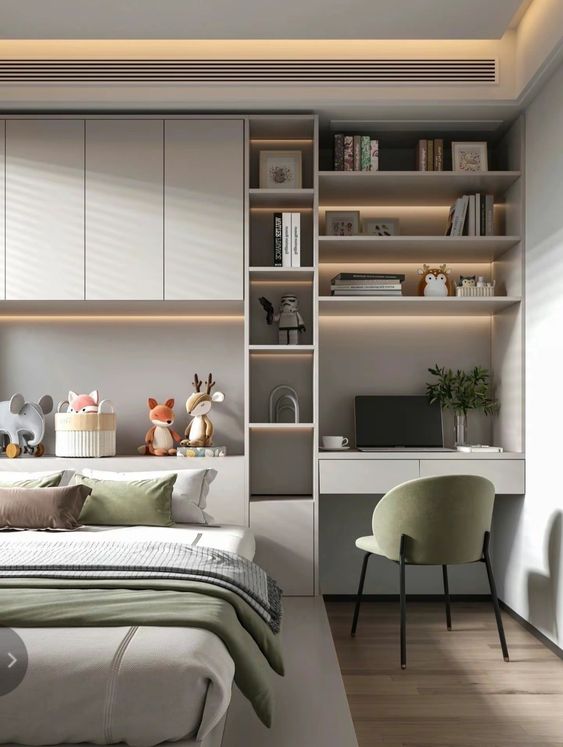
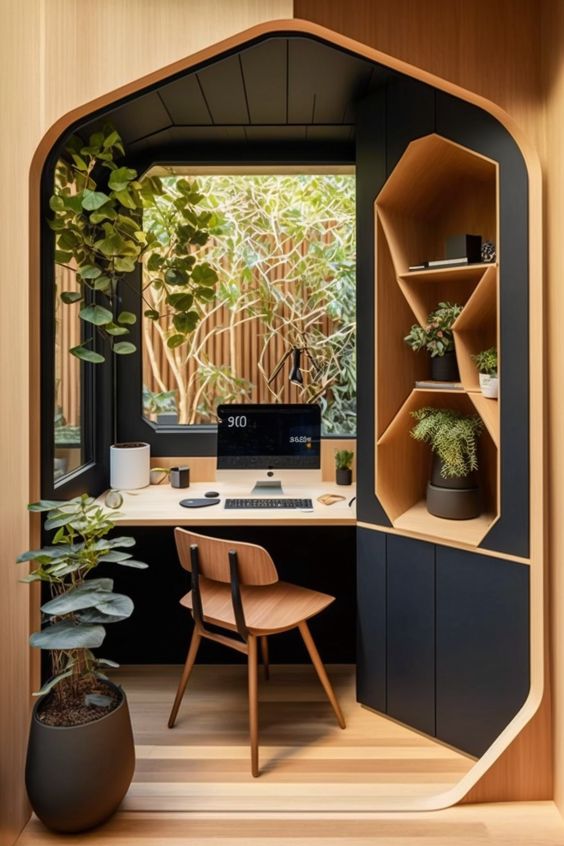
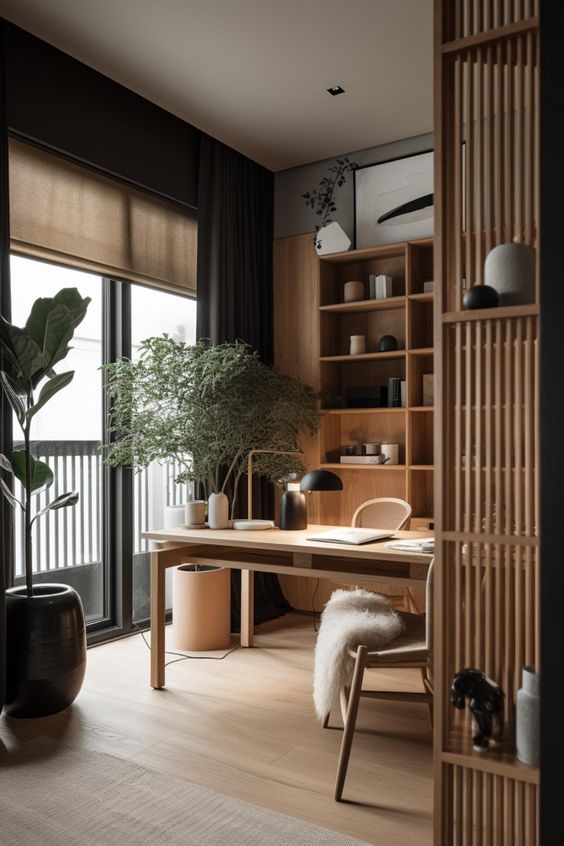
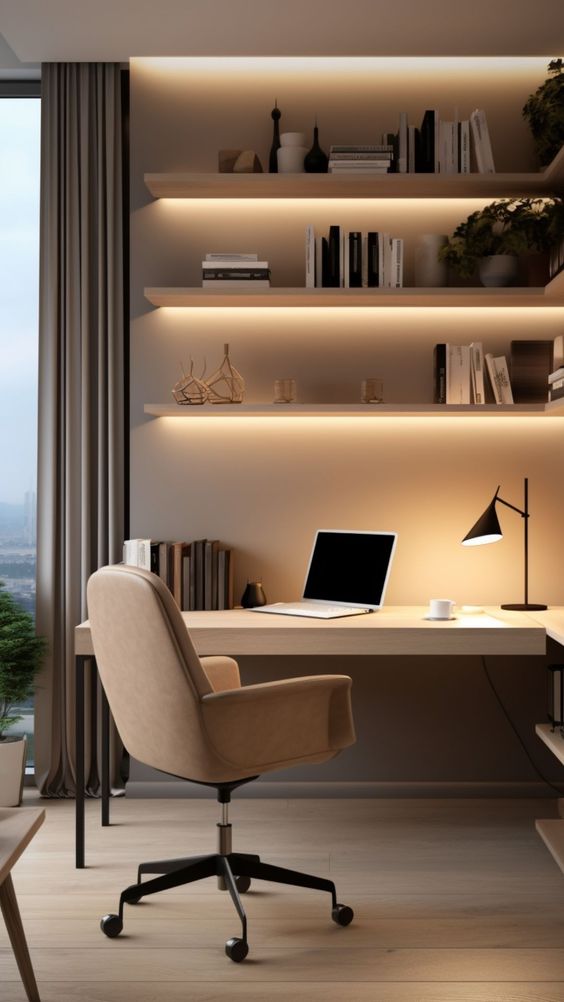
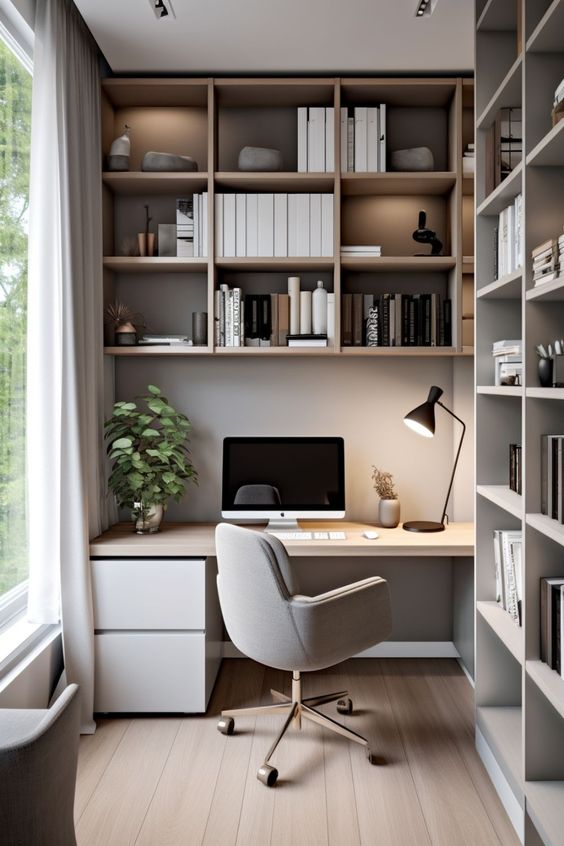

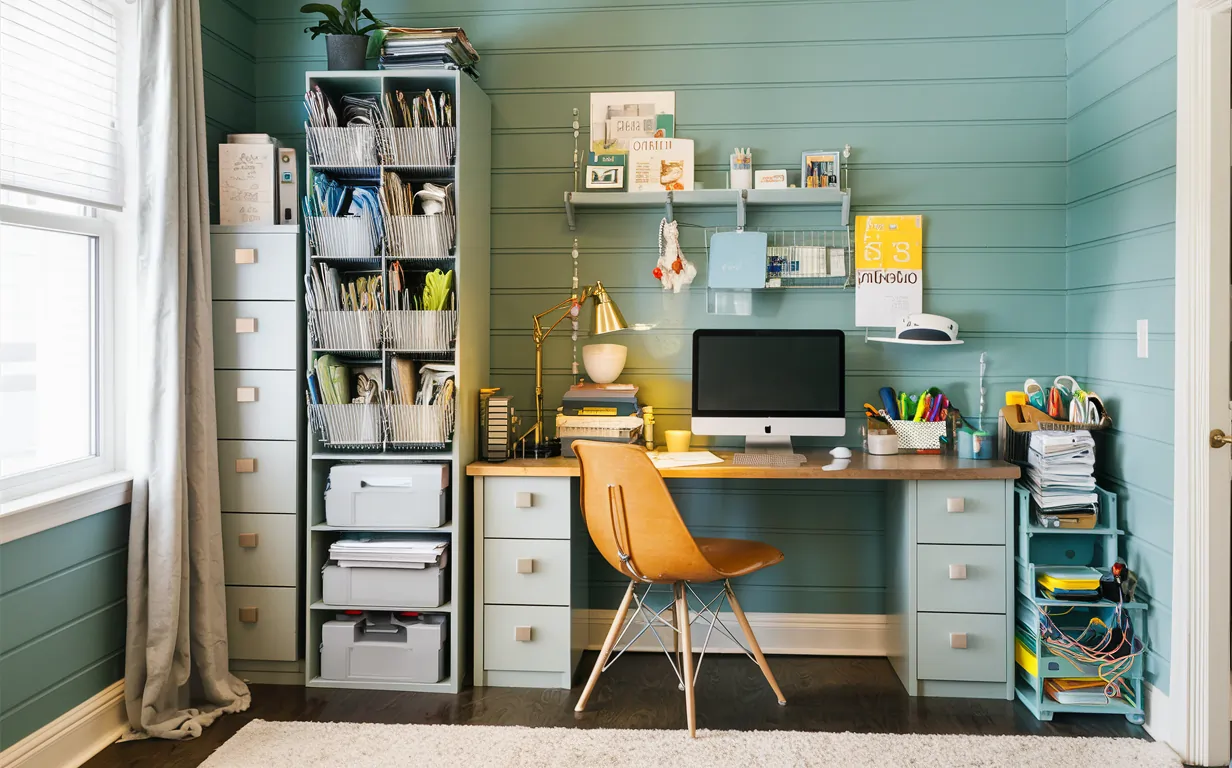
Conclusion
Designing a home office that is both functional and aesthetically pleasing is a rewarding endeavor. By carefully considering location, furniture, lighting, personalization, technology, ergonomics, and productivity, you can create a workspace that enhances your work-from-home experience. Remember, the key to a successful home office is finding a balance between comfort and functionality, allowing you to work efficiently and comfortably.
